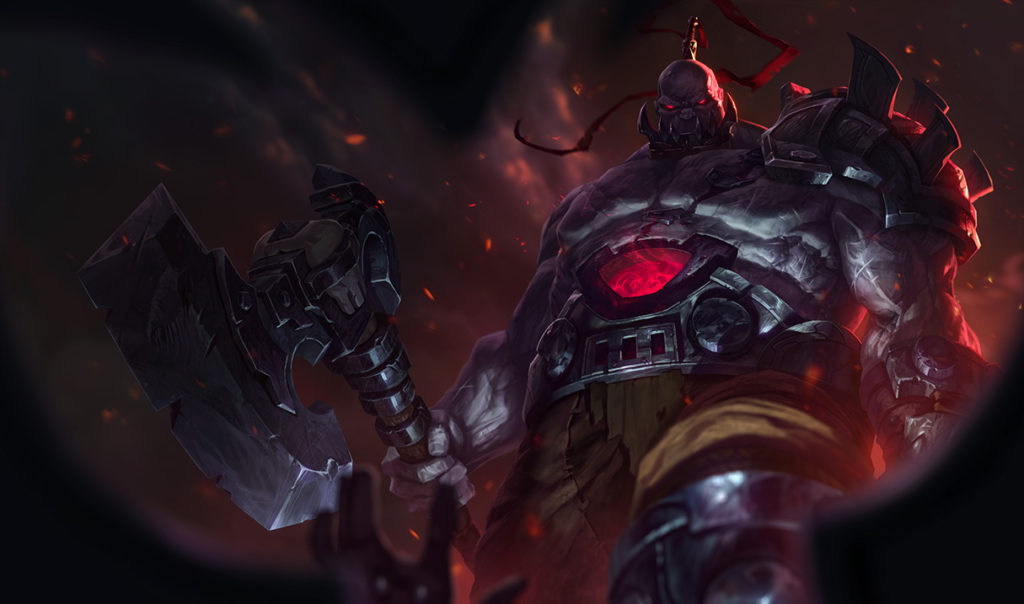The League of Legends Universe Beta website is out and Ymir is super excited to dive deep into the lore of Runeterra!
Many of you who know me, know that I am a huge League of Legends (LoL) fan. It took me a while to catch up to it, to be honest, since I don’t particularly like MOBAs, but I’ve been playing LoL for a good 4-5 years now and and there is no going back (some credit has to go to my friend Garret for keeping me in the game in the early stages). I’ve been looking to write a LoL Games We Dig post for quite a while now, but I wasn’t really sure what I wanted to talk about and still keep it short and readable. Thankfully Riot gave me the opportunity I was looking for with the release of their beta website of the Universe!
I know that many people don’t know (or particularly care) about it, but LoL actually has an incredibly deep lore which has developed greatly over the past couple of years. Originally, Runeterra, the fictional Magic Earth in which the game takes place, was simply there as a backdrop to provide a relative context for concepts like Summoners, Fields of Justice, Institution of War etc. All these terms existed to give a reason for each champion to fight in the Summoner’s Rift and to explain some of the in-game mechanics of the characters. The original LoL concept however, proved to be quite limited for the continuously growing player base of the game. People wanted more backstory and lore and developers struggled to create something within the limited design space provided by the original LoL lore.
Since then, a lot of work has gone into restructuring and recreating the beautiful world of Runeterra. Instead of being a backdrop for new champions, lore is now in the foreground with every release. Every champion has to have strong ties with the world with his/her/its own unique personality, character and role within the universe. A great example is the visual, lore and gameplay rework of Sion in 2014. Sion used to be the Undead Abomination, a murderous Noxian warrior who had been captured and executed by Demacians on one of the countless battles between the cities. Katarina (another Noxian champion) had managed to recover his beheaded corpse which was then resurrected by Noxian necromancers. After being reanimated, he became more brutal and life-draining than ever before. For some reason though, which was not particularly explained, he decided to abandon Nox and seek undead glory in the Fields of Justice through the Ministry of War. Now admittedly, Sion, besides having a rather dull lore, was also a very, VERY boring champion to play, based on auto-attacks with abilities which didn’t particularly feel like they suited a brutal, blood-seeking undead.
In 2014, the development team introduced the community with the new, reworked Sion, now the Undead Juggernaut. Sion was now a praised fierce Noxian warrior. He had died gloriously in battle against Demacia just a little after he managed to kill the Demacian king, Jarvan I. A statue now stands on top of his grave to remind the citizens of Noxus of their hero. But the Grand General had different plans. For fear of internal conspiracies and with his closest supporter dead he had a mad plan. He would bring Sion back to life! He forbids access to the Sion memorial and starts the process of resurrection; it is too late to go back now. What comes out of the grave is no longer human. Sion is an unstoppable behemoth with no fear of death because he has already been denied oblivion. Even if he falls, his commanders will just piece him back to fight again for the empire. “But within his sundered body lies a soul desperately searching for the sense of self he once had, and when that sense is most awakened in times of war, then war shall be had.”

His reworked abilities now also reflect his lore much more. His passive reads that when he dies, he will briefly come back to life with extra attack speed but unable to use his abilities or his weapon. With every auto-attack he gets, his period of brief resurrection extends. Additionally, with his ultimate ability, Unstoppable Onslaught, he charges in a (more or less) straight line until he collides with a wall or enemies for massive damage. That fits really well his description as a “juggernaut”. A very nice final touch to the model (and a bit of archaeological material observation, it is quite similar in style with that of Jarvan IV, another champion in the game) is that his jaw is now the helmet of Jarvan I, the king he slayed before he died.
These reworks and all the new champions are now introduced through a smaller or larger virtual release event where we see bits and pieces of their lore until they are revealed through videos, comics, literary works, music videos or any other artistic medium you can think of. This allows the narrative team to unfold more complex and beautiful stories for each character and opportunities to develop the setting even more.
Needless to say, my lore-geek heart was incredibly happy with the evolution of LoL lore. Together with Garret we tend to talk about it quite often: choices, scenery, characters and generally all things LoL lore. As someone who is interested in the writing of history and (hi)storytelling, I was amazed by how Riot developers managed to recreate a mythos from something stagnant to something beautiful and big without losing any consistency in their work. I try to see differences in champion lore and also how characters developed based on the evolution of their role in game and in the story. There was one thing I was missing though, and that is the actual setting.

If you pay attention to LoL lore you probably know most of the regions of Runeterra: Ionia, Demacia, Freljord, Shurima, Bilgewater, Mount Targon, Noxus, Piltover, Zaun, the Void, Bundle City and of course THE SHADOW ISLES! While we do indeed get glimpses of all these regions from character lores, videos and artwork, we don’t really have actual regional art. It is very rare to see drawings or maps of entire cities, or to read things about these cities which are not related to the champions. It does, of course, make sense from a developer’s point of view, because the focus has to be on the champions but still, I just wanted to know what all these places looked like and how they operated, what the struggles were of the citizens, what the conflicts were between cities and regions. Yes, I like this kind of history, even fictional history.
As mentioned, it took me a while to decide what aspect of LoL lore I wanted to write about on our website. I have so many ideas regarding (hi)storytelling and the development of the LoL cosmos. And one day, there I was just minding my own business, not thinking about it anymore since we are so busy with our upcoming publication (woop woop!), and I get a message from my friends: the LoL Universe Beta website is out! So hopefully this is a start of a longer series of posts regarding the lore of League of Legends and what we can learn from its (re)design for our research in history and archaeology. If you have any ideas of things you would like me to explore in regards to the League of Legends lore please send us a message on facebook, twitter, mail, an actual letter, a messenger-crow or a Maokai gift and I will do my best to write something about it! See you in Summoner’s Rift!
